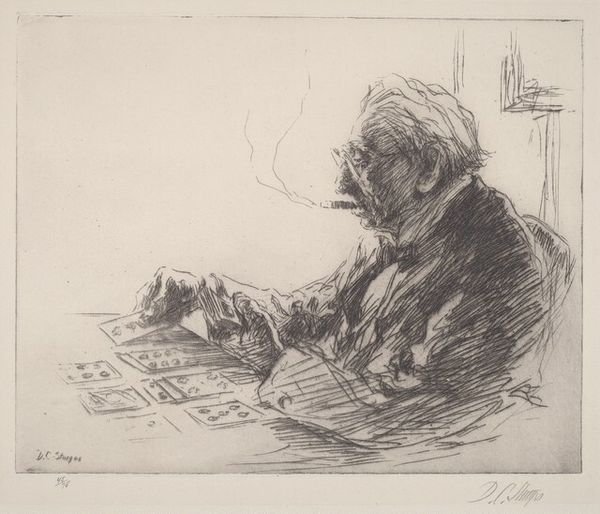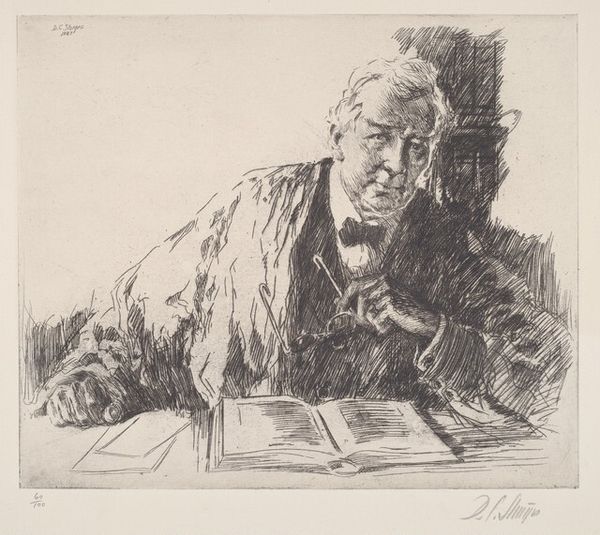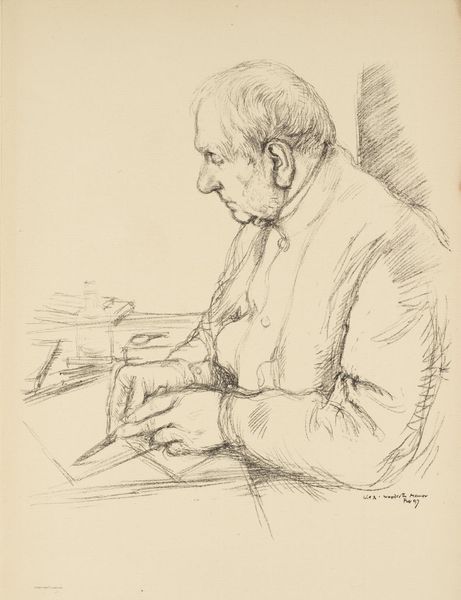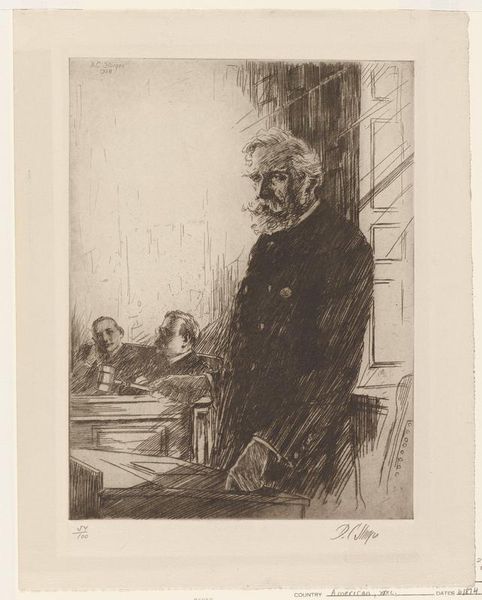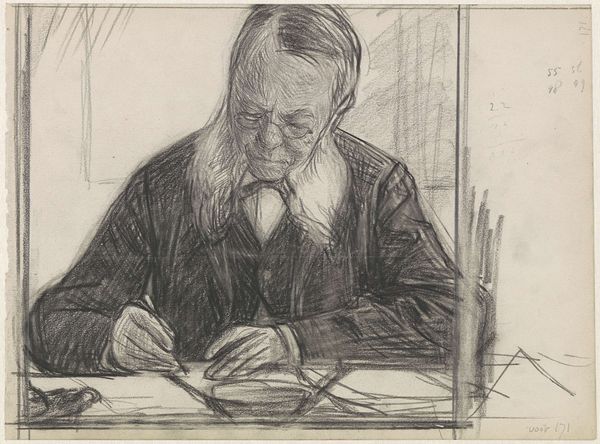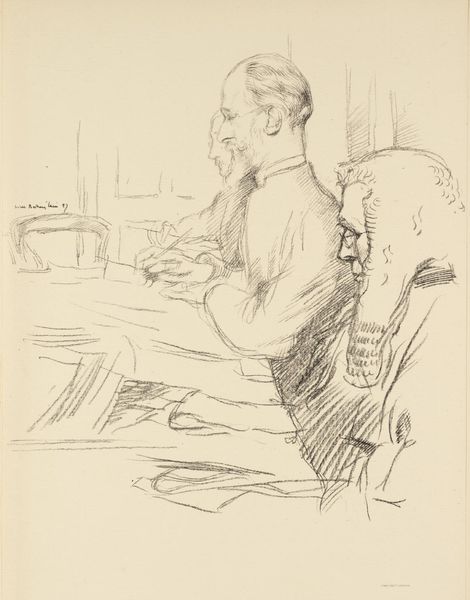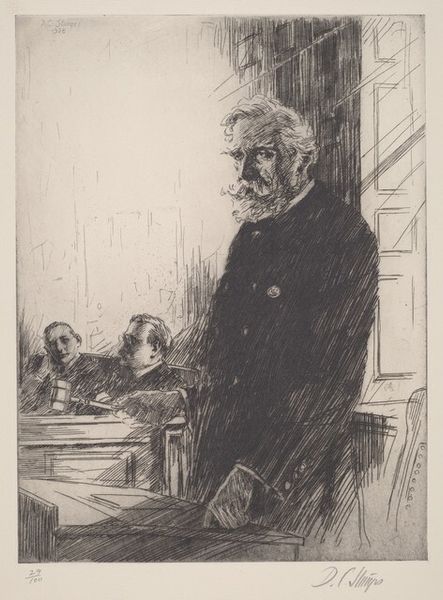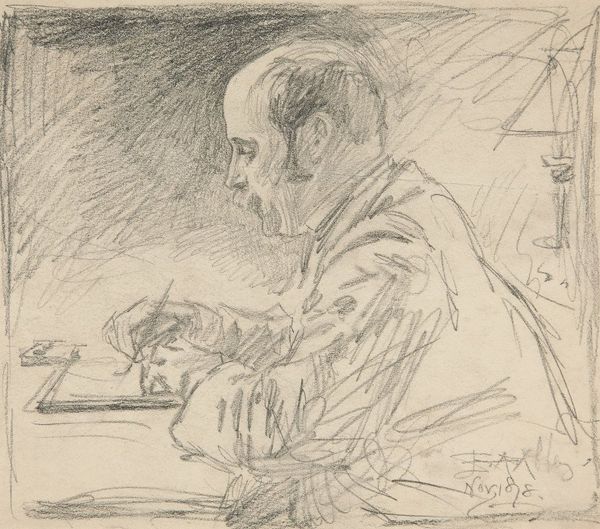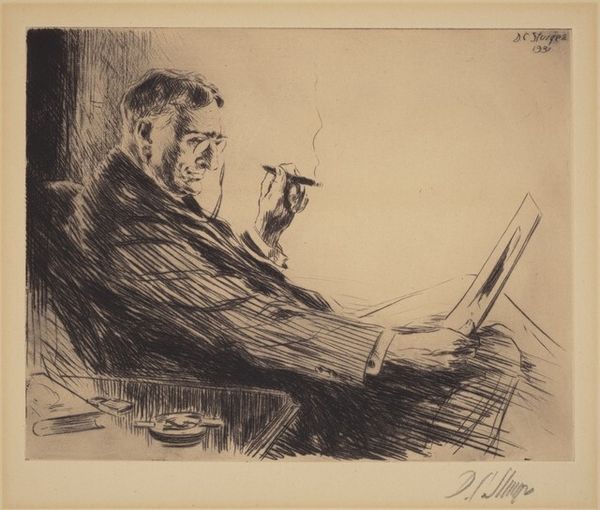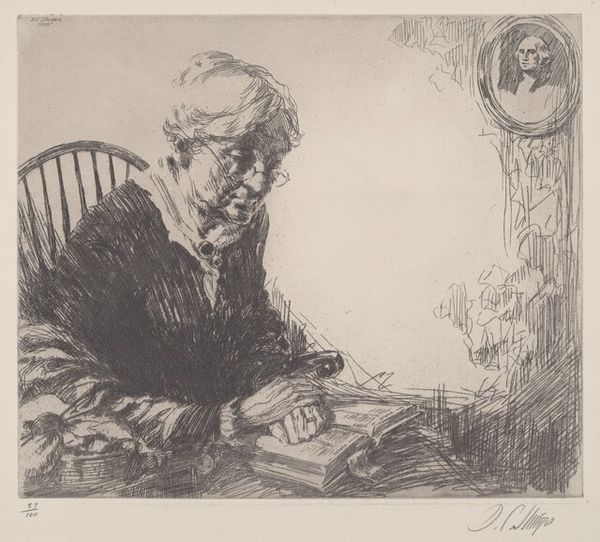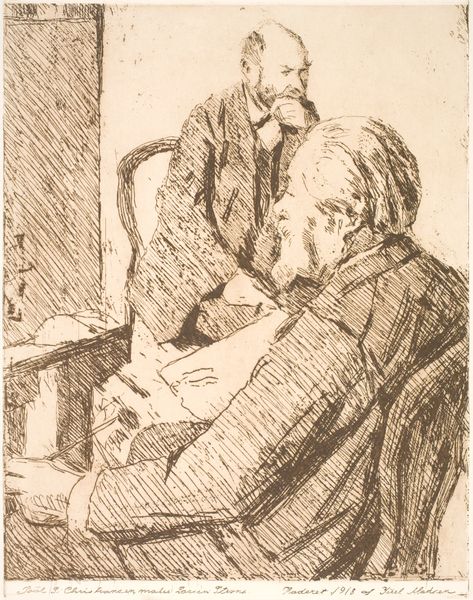
print, etching
#
portrait
# print
#
etching
#
genre-painting
#
modernism
#
realism
Copyright: National Gallery of Art: CC0 1.0
Curator: I'd like to introduce you to "The Station Agent," an etching crafted by Dwight Case Sturges in 1929. It presents a slice of everyday life in what appears to be a small-town train station. Editor: The immediate feeling is… weariness. The man's posture, the cluttered desk, the subdued tones—it speaks to a long day, perhaps a long life, dedicated to routine. The etching itself is so detailed but subdued in tone, I wonder what his etching plate would be made of? Curator: As an etching, the piece would have been painstakingly created, most likely using a copper plate. The lines, incised by acid, gain depth through repeated immersions, echoing the station agent's own daily rituals. The symbolism of trains here carries significant weight too. In 1929 they still represented progress and interconnection. Editor: Copper, yes. Etching demanded both patience and a keen understanding of how materials respond to chemical intervention, in turn producing a highly reproducible form that could easily circulate widely at the time, which resonates deeply with me. Look how his tie hangs loose, his spectacles low on his nose! You feel as though you are intruding into his private, but publicly situated, space. Was Sturges trying to give this common scene greater meaning, as in other examples of genre painting? Curator: Precisely! The trains are both physical engines and symbols of a much bigger American project that continues today. It is an illustration of how images connect everyday work to grand narratives. The man is more than a station agent; he embodies a larger system. Think about the cultural resonance and psychology behind images depicting American growth during the era of industrialization and urbanization, and this small picture speaks volumes. Editor: I wonder about the printing process, though. Each pull from the etched plate carries with it slight variations in inking and pressure. Was Sturges hands-on with that or would the plates circulate among printers of the era? The image also evokes ideas of transit, commerce, and industrial labor central to materialist art. Curator: Good question, there were, for example, typically about 100 plates created. It is these small variances, though, that remind us of how each individual print gains its distinct aura through its intimate touch and context of creation. Editor: Seeing that detail in the lines certainly illuminates Sturges' commitment to capturing a specific mood. Curator: Agreed. Sturges has not only preserved the dignity of labour, but has done it with such beautiful clarity. The act of rendering routine momentous by capturing and framing it.
Comments
No comments
Be the first to comment and join the conversation on the ultimate creative platform.
